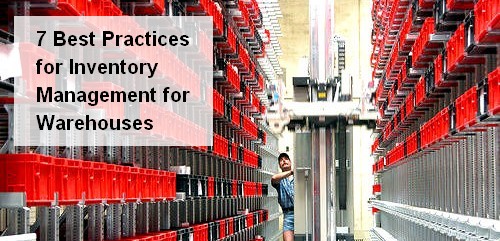
Supplying your products on time and with multiple channels can be quite challenging. You receive constant pressure from various buyers and store locations. It is a challenge to keep up with inventory demands while monitoring the inventory process and the needs of your workers and your customers or buyers.
Without going into the disadvantages of inventory reduction, but focusing on a businesses' ability to fulfill all the requirements brought in by customers. This is why your business needs to have a proper inventory management practice, as things can quickly go haywire if you’re not careful managing the inventory process. With that in mind, here you have some of the best ideas that will make inventory management run smoothly.
1. Try to use money-saving options like wave picking and cross docking
Whenever you plan on doing inventory management for warehouses, you should focus on ROI and running a lean operation. Cross-docking is a very efficient system that will allow you to significantly decrease both handling and storage time.
Cross-docking allows businesses to manage warehouse inventory in a seamless manner, and it makes storage a lot easier for that reason alone. If you have a complex shipping system, you can opt for wave picking. If you adopt an advanced tracking method, you will find both cross docking and wave picking to save money and time.
2. Try to link inventory levels and accuracy
Your inventory management system will deliver a large amount of data in regards to the way products are moving within the warehouse. If you have a complex system, you will find all this information to be more than overwhelming at times.
However, a simpler system is to analyze some specifics and find the results that you want rather than swift through endless data. With this idea, you can save a lot of money as it will eliminate additional shift orders and inventory. Although, it can be difficult to integrate if your company doesn’t have inventory tracking, but it can deliver great results in the end.
3. Reorganize the floor plan
Restructuring your floor plan might come with a bit of skepticism. However, it’s a proven strategy to modify the floor plan and make it more efficient. Since product supply and demand changes continuously, you should make storage changes as well.
An optimal strategy is to try and modify the storage plans to match your new business model. It’s better, more efficient and it can bring in front an exquisite value due to that.
4. Always try to remember personal identification
Aside from doing inventory tracking, you also need to do employee monitoring. This is why it can be a useful strategy to add some new security protocols that will make it easier for you to track employees.
Employee monitoring optimal choice if you want to increase safety protocols, it will indeed pay off immensely for your business. Take your time, focus on results and the outcome can be very well worth it in the end.

5. Track the bestsellers or the high sellers
An advantage of optimizing your inventory management for warehouses is that you can track sales and orders for each product or customer. This information can be extremely useful, most businesses can improve on their smart insights into inventory data. Use this information to track the high sellers. Position these in a place where you can find and follow them a lot easier.
This way the entire inventory management will be more efficient, storage and shipping are performed faster, and you never have to worry about this task ever again. If you want to make your big clients happy, this might be one of the best methods you can use.
6. Use a quality inventory management software
Proper inventory management for warehouses can be done as long as you have the right software. The old inventory management systems lag, and they don’t have the ability to cater to the needs of current users. That alone can be very challenging, and in the end, it might not be as economical as you expect.
Lag can be a problem with most inventory management solutions, but the latest tools on the market allow you to acquire real-time updates on the products, which can be tagged with RFID for quick and accurate inventories. Decision efficiency is increased and confusion in high pace supply chain environments is quickly reduced.
7. Use movable and fixed tracking options
Using movable tracking options will allow you to see where you placed a product, how you can access it and if it’s ready for shipment. Movable tracking enables you to see where items are located at all times, and it makes the entire process faster, easier and more intuitive.
On the other hand, fixed tracking is also an option for many businesses. This way you can easily manage and assign destinations with precise efficiency. You can seamlessly combine fixed tracking with movable tracking if you want to acquire optimal results.At the end of the day, fixed and movable tracking options can do wonders if you use them correctly.
Often times there is a learning curve and initial investment in correct inventory management processes, but these short term investments have large pay offs in the future.











